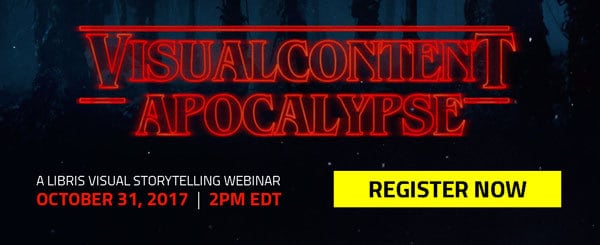User generated content (UGC) can have a powerful impact on your fans. Not only does it allow your loyal customers to engage with your brand, it also allows your team to showcase your brand’s impact on the lives of your fans. UGC allows you to build stronger relationships with your existing customers, and has a ripple effect as it reaches your customers’ followers.
So what’s the best way for your brand to work UGC into your storytelling strategy? Here are six cutting-edge campaigns that brands are using to transform their marketing from a passive user experience to one where the user is actively participating in the brand’s content creation.
1. Sephora’s “Beauty Board”
Inching one step closer to purchasing products directly from social networks like Pinterest and Instagram, Sephora created it’s own Pinterest-inspired board for customers to share their own look. Then, if a Beauty Board visitor likes what he or she sees, all they have to do is click on the products listed under the image.

The Takeaway: This ecommerce driven approach to UGC is definitely gaining traction, with other brands exploring similar campaigns. More and more, we see brands embedding UGC on their websites and driving fans from interactive, social content to pages where they can make a purchase.
2. Tourism Queensland’s “Best Job in the World”
Anyone in the tourism industry will certainly remember this innovative campaign, which asked people to apply for what Tourism Queensland dubbed, “the best job in the world” – living and care-taking on a tropical island in Australia.
The oddity of the offer attracted attention from major news outlets, as well as countless user generated video submissions. The brand reviewed these video job applications and selected one person to take on “the best job in the world.” Part of his responsibilities was to run a video blog for Tourism Queensland, packed with the same authenticity and energy as the user generated submissions.
The Takeaway: Contests are a great way to encourage your fans to create content related to your brand, and they can help you find ambassadors and stories that can help you engage fans in the future.
3. Discover LA’s “Picture Yourself in LA”
In the middle of winter, Discover LA challenged New Yorkers to “Picture Yourself in LA.” The travel brand covered New York’s Union Square subway station with posters where passersby could take a photo of themselves and tag the brand on Instagram.
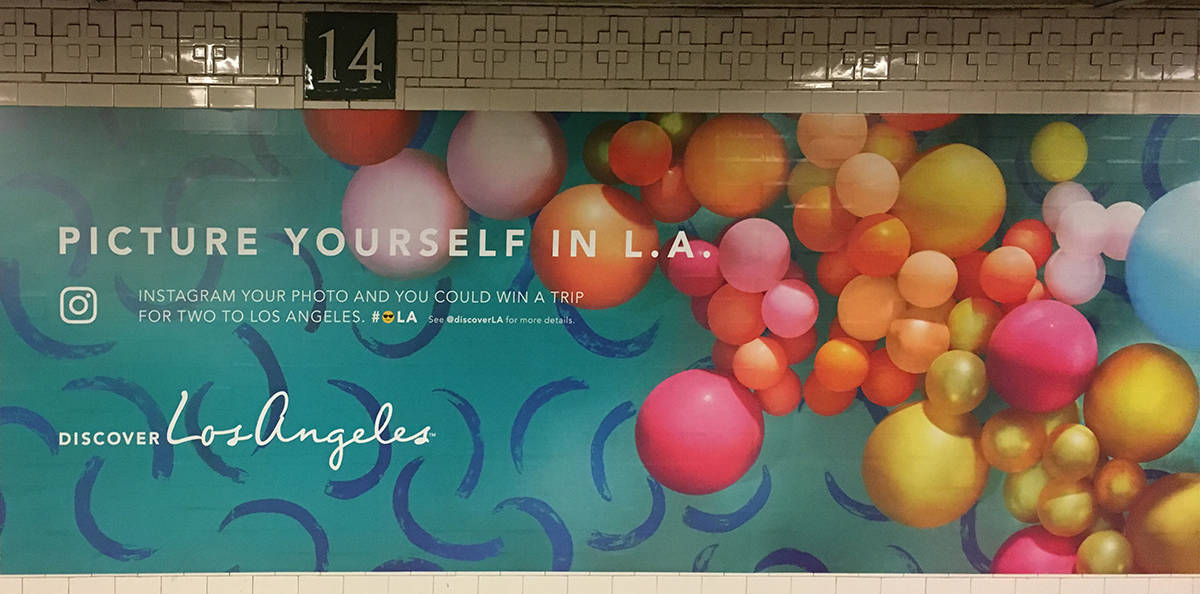
The campaign prompted people to stand in a certain spot with the words, “chill here.”
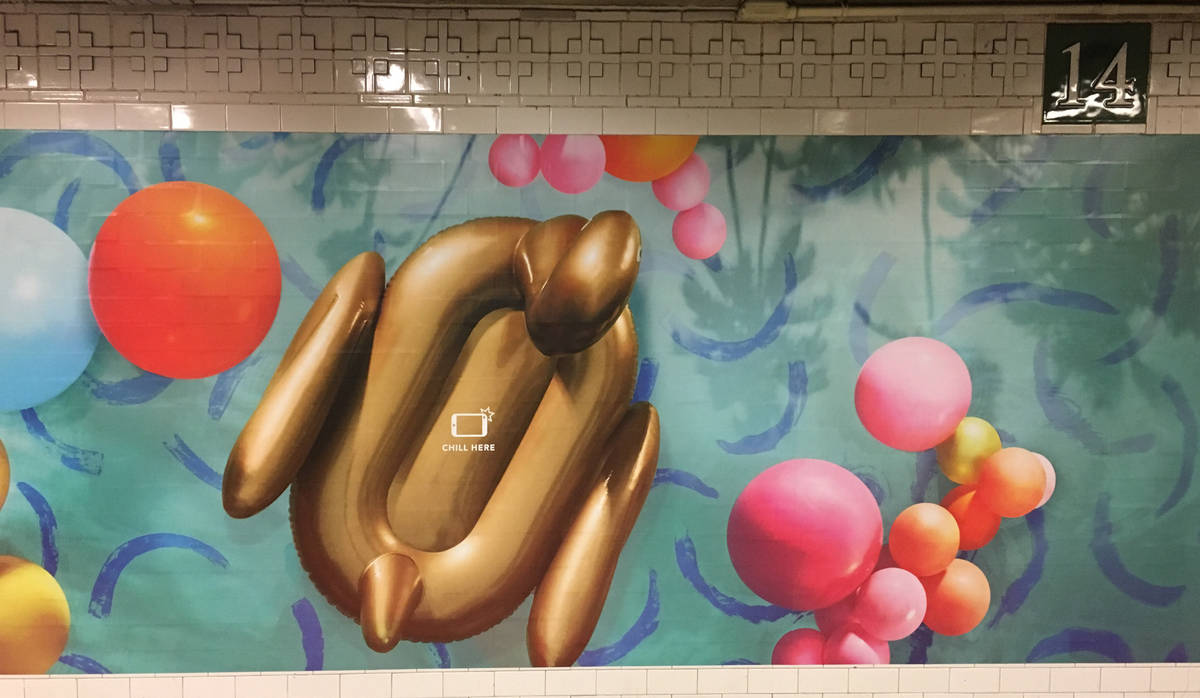
Then, when someone would take a photo against the poster, it could look like they were floating on a raft in a pool.
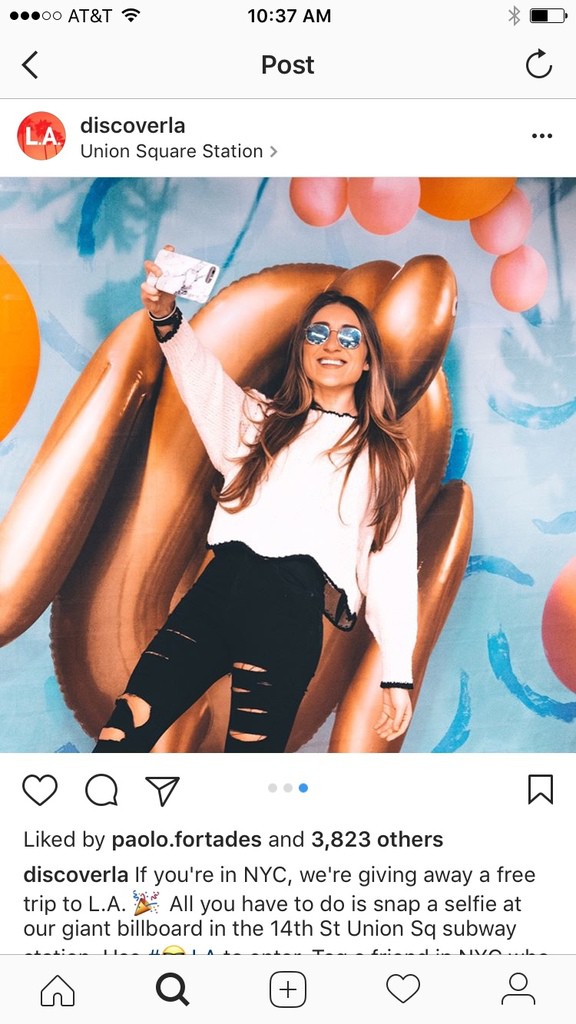
The Takeaway: Hitting the subway station walls in February and March, in the dead of New York winter, made the warm weather of LA even more appealing. Plus, since it was so visual and shareable, the campaign not only reached New Yorkers but also their social networks.
4. National Geographic’s #wanderlustcontest
National Geographic has one of the best brand names around, and social media has only helped expand the brand’s association with the great outdoors. With the #wanderlustcontest, National Geographic asked travelers to share photos of places that aren’t just worth visiting, but that are potentially “on brand” for National Geographic. While the contest offered a prize, the real value for the brand was having an entirely new crowd-sourced library of photos it could use.

The Takeaway: UGC can help you find content and influencers to use on social media, or to repurpose for other channels. Think about how you can inspire content creators to get involved with your brand in an organic way.
5. Starwood Hotels & Resorts’ “Social Hubs”
Starwood Hotels & Resorts created “Social Hubs,” which act as microsites featuring photos taken by guests at the brand’s many resorts in Hawaii. Similar to the other campaigns mentioned, the value here is that hotel guests internalize the brand value and help tell the brand’s story. Plus, seeing these real photos of their fellow travelers’ experiences helps potential guests get an authentic feel for the resorts when they are deciding where to stay.
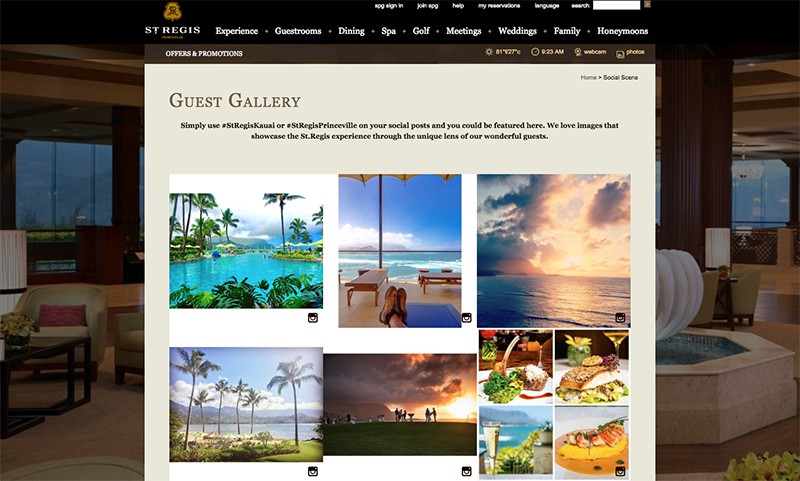
The Takeaway: Incorporating UGC onto your website can help you combine the authenticity of UGC with the ability to guide a viewer’s next step (for example, they might go from a page with embedded social posts to a page where they can purchase something).
6. Chick-Fil-A’s “Mornings Worth Sharing”
In 2017, Chick-Fil-A launched a television advertising campaign called, “Mornings Worth Sharing.” Each commercial is not actually UGC, but is inspired by UGC. This campaign suggests a solution to one of the problems brands face when they want to use UGC beyond social media.
The content you receive from your audience might be amazing, but the production value may not be where you need it to be for the UGC to represent your brand, especially through professional outlets like television commercials. In this example, Chick-Fil-A took what likely originated as user generated content and dramatized it, combining the feel and effect of UGC with a higher production value for broadcast.
Plus, a potential unintended consequence of this campaign is that anyone who sees it might be encouraged to share their own Chick-Fil-A experience. The investment the company made in converting UGC to a dramatized production will pay off by showing Chick-Fil-A fans that the brand wants to see their stories. Learn more about Chick-Fil-A’s visual storytelling strategy.
The Takeaway: Let your fans know you want to hear their stories, and create ways for them to share content with your brand. The stories they create may be better than anything you could cook up in a brainstorm!

